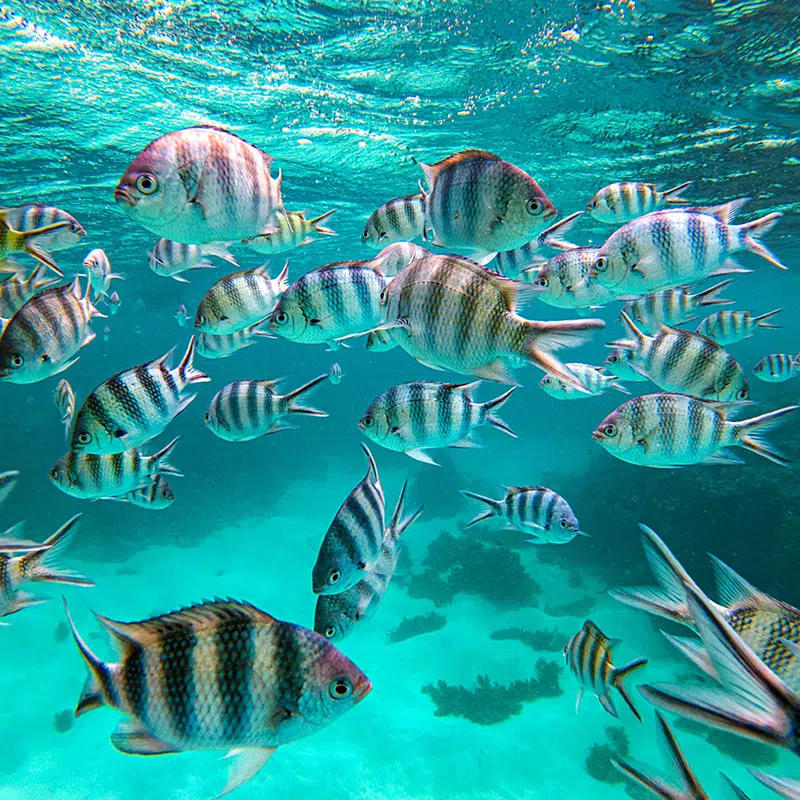An underwater tour guided by our expert
With 115 islands and a wide variety of landscapes, the Seychelles archipelago is also a prime location for scuba diving. Which spots should you choose? What species can you expect to see? Patrick Brissac, Director of Water Activities at PONANT, answers our questions.
What are the most beautiful diving spots in the Seychelles?
Patrick Brissac: The archipelago is very large and offers many interesting spots. My favourite is probably the Aldabra Atoll, in the Outer Islands, which makes for superb dives. As it is a UNESCO World Heritage Site, wildlife is particularly abundant there. In particular, you’ll find a great many turtles. In the same area, there is also the Astove Atoll, a beautiful coral wall, and the lagoon of Cosmoledo for the clarity of its waters. The advantage is that it is a very quiet area: wildlife is therefore well protected there. However, wreck-diving enthusiasts might be disappointed, as there are no such sites in the archipelago.

What species can we expect to see in the region?
Patrick Brissac: Depending on the season, expect to see whale sharks or whitefish sharks, lionfish, beautiful manta rays, gatrins, barracudas, grouper fish… In Aldabra, take the time to admire soft corals and their beautiful colours. This is one of the most beautiful coral reefs in the world! The advantage of the Seychelles is that you can admire interesting fauna and flora without necessarily going down very low. A flipper excursion can actually be very satisfying, if the conditions are good.
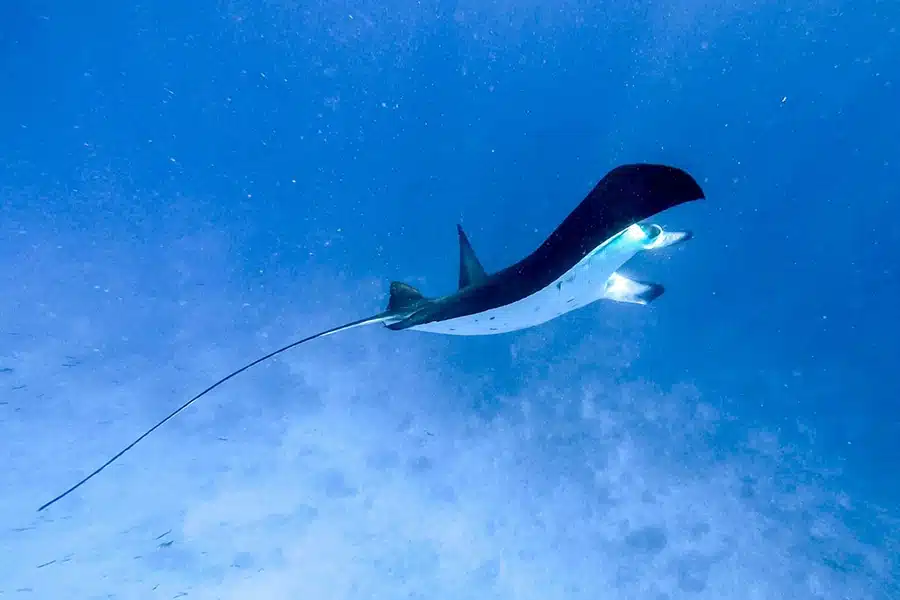
What are the best times to dive?
Patrick Brissac: In the Seychelles visibility varies greatly depending on the season, declining between December and February due to heavy rains. From March, it becomes very good again, and can reach up to twenty or twenty-five metres, with beautiful blue water and a temperature of 27 or 28 degrees on the surface. You also need to know how to choose your moment: the same spot can be more interesting in the morning, another may be better if you wait for certain tidal conditions… Always trust your instructor, as they are trained to present the seabed to you in its best light!
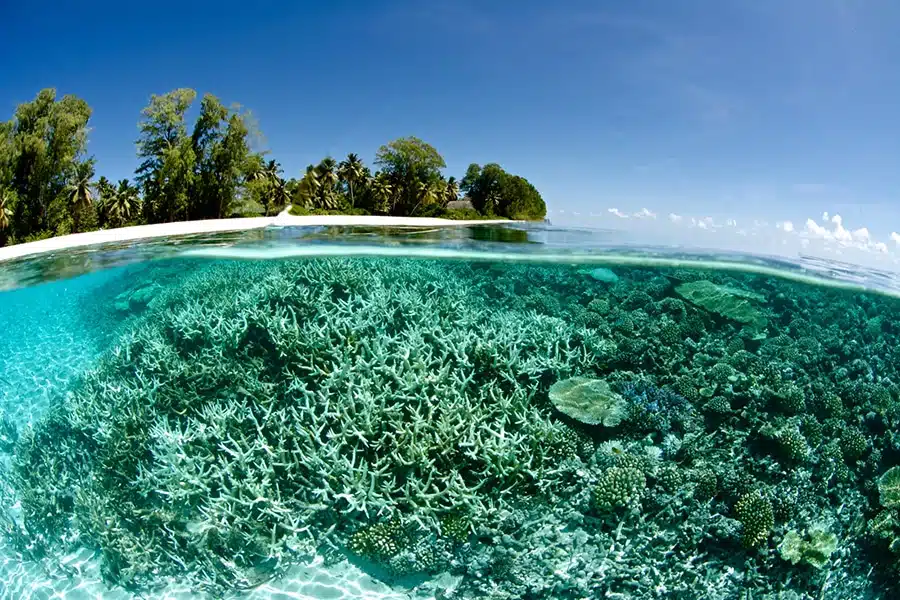
What are your tips for getting the most out of your very first diving experience?
Patrick Brissac: The best thing to do is to listen carefully to the instructor’s explanations about the equipment and safety, and never force yourself outside of your comfort zone. Diving naturally generates fear because you’re entering an environment that isn’t natural to us. It’s normal to feel a little nervous! Some first-timers manage to relax and breathe naturally, which is ideal. Others are less confident, but it doesn’t matter. It might be better the second time around.
Can diving be harmful to the environment?
Patrick Brissac: Not if you follow the basic rules: do not touch anything, do not harass the animals, and do not take anything “as a souvenir”, even if it is a piece of already broken coral. At Aldabra, you can only dive with a State-approved guide who is responsible for ensuring the preservation of the sites.
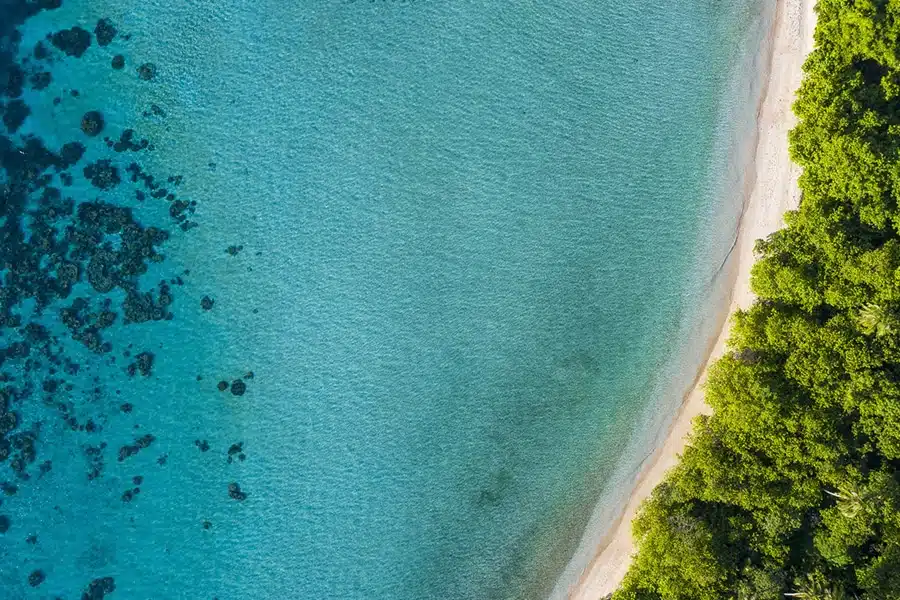
What are your best memories of diving in the Seychelles?
Patrick Brissac: I was lucky enough to get close to a very beautiful whale shark. I wasn’t expecting it at all, because it wasn’t the season yet. I saw a large silhouette above me, and at first I thought it was our boat, but then I realised it was actually a shark. I especially won’t forget this encounter as it happened on my birthday! I was also lucky enough to see a whole colony of manta rays pass by. That time, I wasn’t diving. I was aboard the PONANT sail boat… We saw them drift by us all day long, sometimes even circling the boat. It was exceptional.
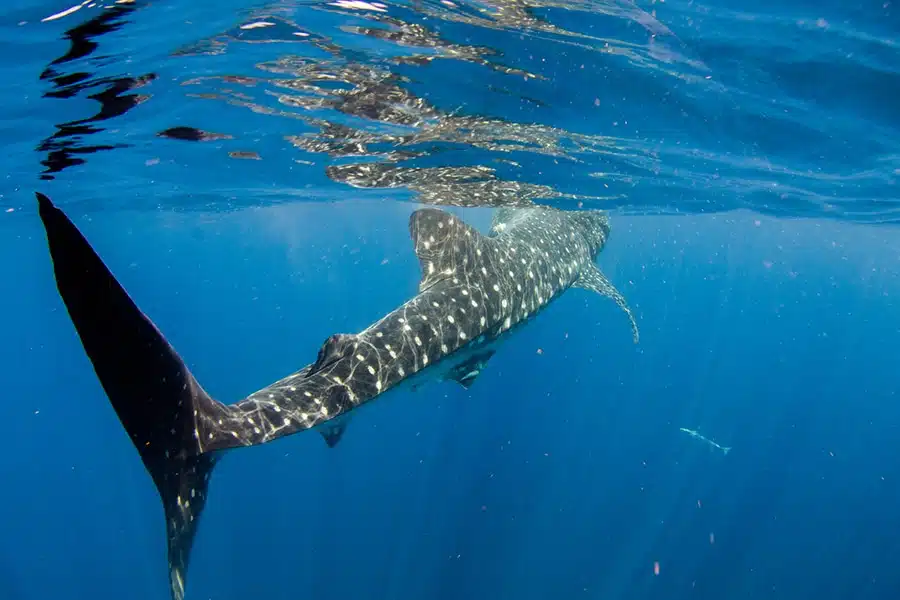
Learn more about whale sharks
Up to 20 metres long and weighing in at 34 tonnes: the whale shark is the largest living fish on Earth. Recognisable by the lines of colour that adorn its back, its “chequerboard markings”, it takes its name from the fact that it shares certain behaviours with whales. And in particular its food preferences: plankton, krill, and small marine animals. Despite the impressive size of his mouth, these sharks present no danger to humans. In fact, they are known for their placid behaviour when interacting with divers. The best season to see them in the Seychelles? September to December, with a peak around October.

Dive in the Seychelles
Admire the marine fauna that inhabits the archipelago’s crystalline waters on a PONANT expedition cruise

